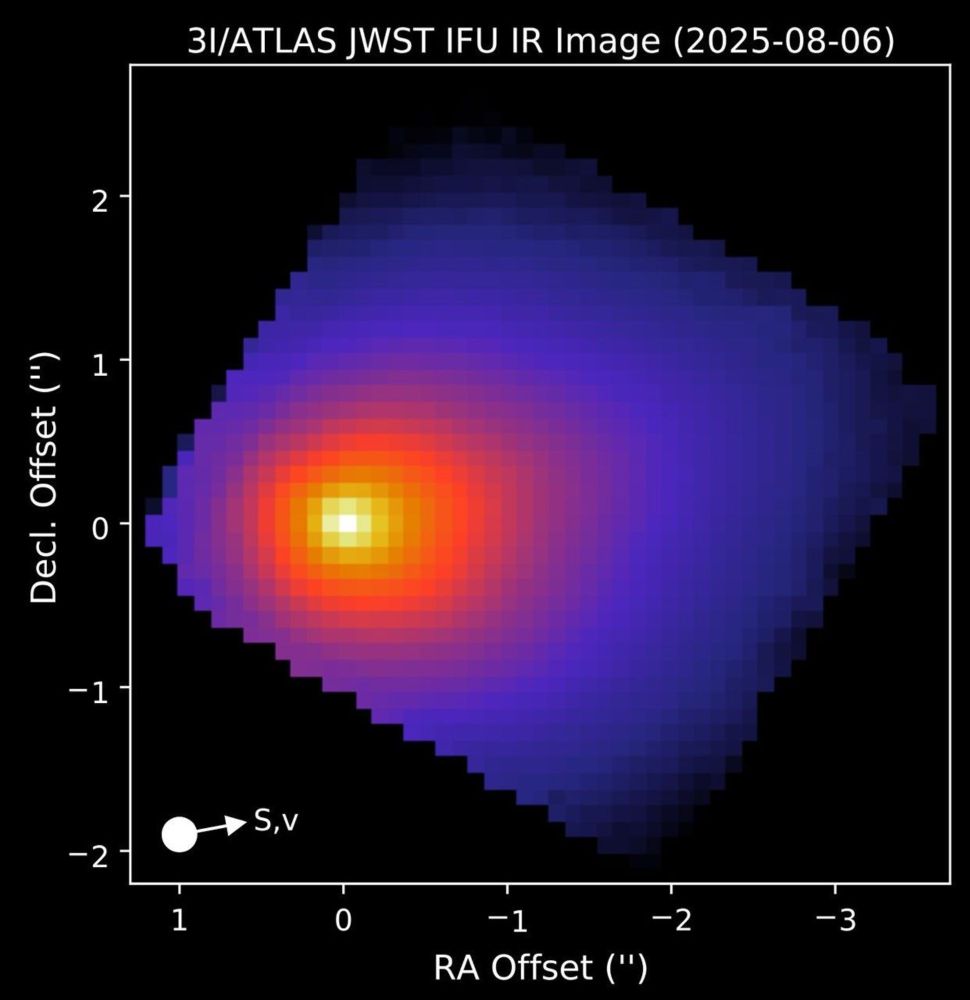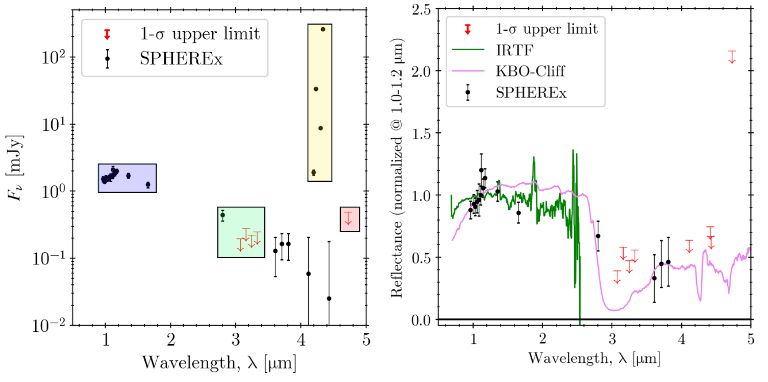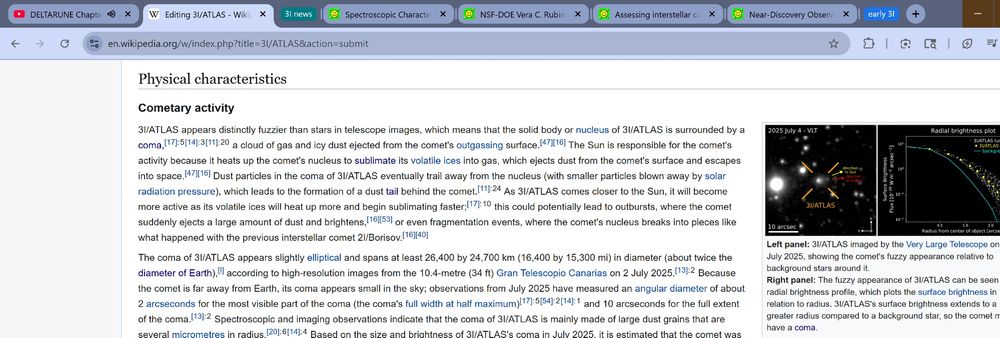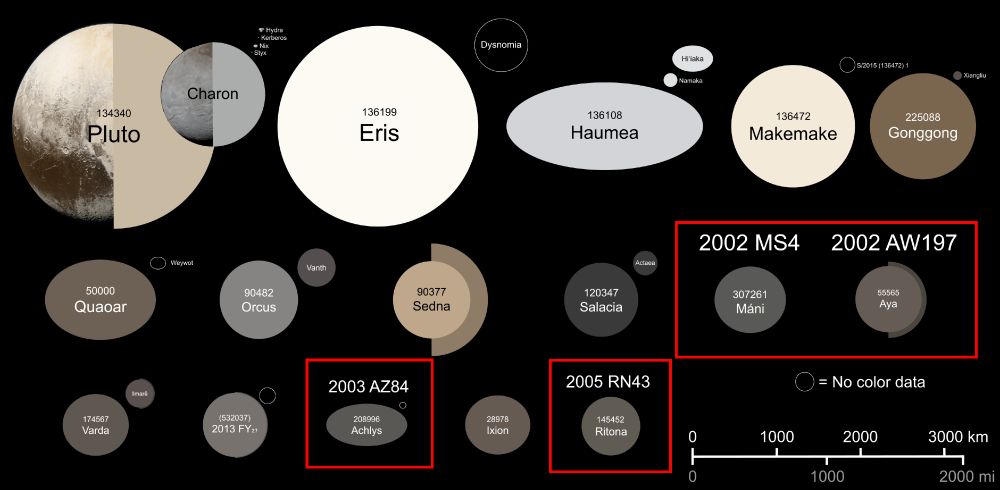
Astrophysics undergrad student in California (grad '27), aspiring planetary scientist. I do astronomy research on asteroids, comets and TNOs!
pfp by EchaSkqech
banner by Ian Regan
(I'll post these individually later)



(I'll post these individually later)
This teeny meter-wide asteroid C15KM95 was officially announced with the new name "2025 TF" today! minorplanetcenter.net/mpec/K25/K25...
(and a neat photo of the asteroid by @filipp-romanov.bsky.social over at: bsky.app/profile/fili...)
Now to wait an hour until this gets on Wikipedia...
This teeny meter-wide asteroid C15KM95 was officially announced with the new name "2025 TF" today! minorplanetcenter.net/mpec/K25/K25...
(and a neat photo of the asteroid by @filipp-romanov.bsky.social over at: bsky.app/profile/fili...)
Now to wait an hour until this gets on Wikipedia...
I combined different epochs and oriented them with north being up. I removed stars. The moon changed position during its orbit around the #DwarfPlanet.

I combined different epochs and oriented them with north being up. I removed stars. The moon changed position during its orbit around the #DwarfPlanet.
Full resolution image version (~322Mpix) is available on Flickr www.flickr.com/photos/10958...
PDF version (~73MB) is available here: drive.google.com/file/d/1EW-x...
🧵 1/5

Full resolution image version (~322Mpix) is available on Flickr www.flickr.com/photos/10958...
PDF version (~73MB) is available here: drive.google.com/file/d/1EW-x...
🧵 1/5
#SciArt #SpaceArt


So now we have evidence of geochemical activity, a cryovolcanic hotspot, and a potential atmosphere.
I swear if Makemake turns out to also have rings or a second moon, it's gonna become my 4th favorite dwarf planet
So now we have evidence of geochemical activity, a cryovolcanic hotspot, and a potential atmosphere.
I swear if Makemake turns out to also have rings or a second moon, it's gonna become my 4th favorite dwarf planet

They are somehow not even the biggest news in the list. Today's arXiv day's absolutely stacked.
They are somehow not even the biggest news in the list. Today's arXiv day's absolutely stacked.
2004 GV9 → Goibniu
2005 RM43 → Rumina
2002 UX25 & moon → Uni & Tinia
* Uni is weird because it's made of holey ice less dense than water
2002 XW93 → Xewioso
2013 FY27 → Chiminigagua (named 3 weeks ago, but nobody mentioned it on bsky)

2004 GV9 → Goibniu
2005 RM43 → Rumina
2002 UX25 & moon → Uni & Tinia
* Uni is weird because it's made of holey ice less dense than water
2002 XW93 → Xewioso
2013 FY27 → Chiminigagua (named 3 weeks ago, but nobody mentioned it on bsky)
An unexpected occultation discovery of a potential 2nd moon or 3rd ring arc around dwarf planet Quaoar!
The new moon/ring is 30±2 km wide and seems to be 5757 km from Quaoar—suspiciously close to 7:2 orbital resonance with Quaoar's big moon Weywot!
iopscience.iop.org/article/10.3... ☄️

An unexpected occultation discovery of a potential 2nd moon or 3rd ring arc around dwarf planet Quaoar!
The new moon/ring is 30±2 km wide and seems to be 5757 km from Quaoar—suspiciously close to 7:2 orbital resonance with Quaoar's big moon Weywot!
iopscience.iop.org/article/10.3... ☄️
My image processing from 18. August: commons.wikimedia.org/wiki/File:Al...

My image processing from 18. August: commons.wikimedia.org/wiki/File:Al...
The source on the left is actually two objects, called Lempo and Hiisi. The object on the right is called Paha.
My processing of this #JWST NIRCam image: commons.wikimedia.org/wiki/File:Le...

The source on the left is actually two objects, called Lempo and Hiisi. The object on the right is called Paha.
My processing of this #JWST NIRCam image: commons.wikimedia.org/wiki/File:Le...

Rahatgaonkar et al, ApJL submitted

Rahatgaonkar et al, ApJL submitted

"a CO2 dominated coma, with enhanced outgassing in the sunward direction, and the presence of H2O, CO, OCS, water ice and dust. The coma CO2/H2O mixing ratio of 8.0 ± 1.0 is among the highest ever observed in a comet"

"a CO2 dominated coma, with enhanced outgassing in the sunward direction, and the presence of H2O, CO, OCS, water ice and dust. The coma CO2/H2O mixing ratio of 8.0 ± 1.0 is among the highest ever observed in a comet"


My image with #JWST, processed today: commons.wikimedia.org/wiki/File:Qu...

My image with #JWST, processed today: commons.wikimedia.org/wiki/File:Qu...
Eris is the most massive dwarf planet in the solar system, in orbit around the sun beyond Neptune. More massive, but smaller than Pluto. #DwarfPlanet #planetsci
My image processing: commons.wikimedia.org/wiki/File:Er...

Eris is the most massive dwarf planet in the solar system, in orbit around the sun beyond Neptune. More massive, but smaller than Pluto. #DwarfPlanet #planetsci
My image processing: commons.wikimedia.org/wiki/File:Er...
(I've been busy improving the 3I/ATLAS Wikipedia article..!)
en.wikipedia.org/wiki/3I/ATLAS

(I've been busy improving the 3I/ATLAS Wikipedia article..!)
en.wikipedia.org/wiki/3I/ATLAS
2005 RN43 → "Ritona" today
2003 AZ84 → "Achlys" on June 30
2002 AW197 → "Aya" on June 30
2002 MS4 → "Máni" on June 9
(size comparison by Lunathesilly on wiki)

2005 RN43 → "Ritona" today
2003 AZ84 → "Achlys" on June 30
2002 AW197 → "Aya" on June 30
2002 MS4 → "Máni" on June 9
(size comparison by Lunathesilly on wiki)


